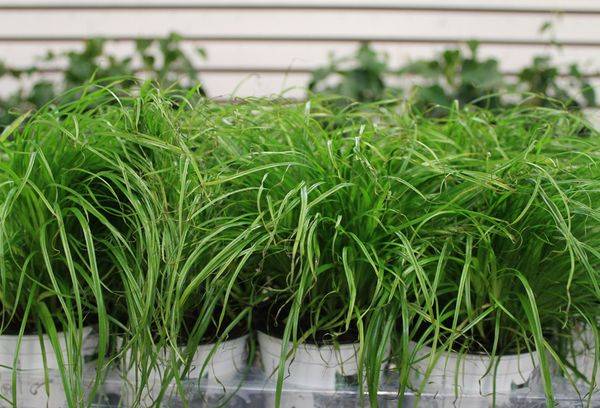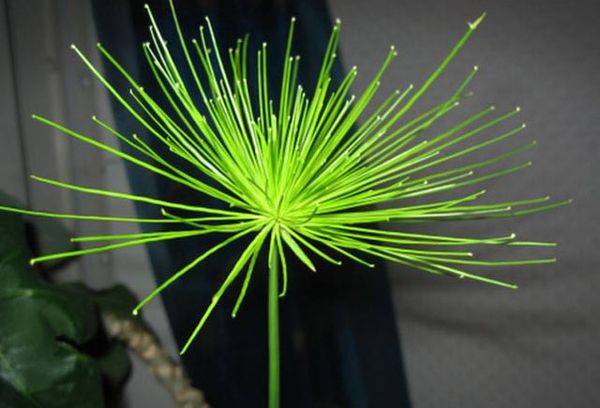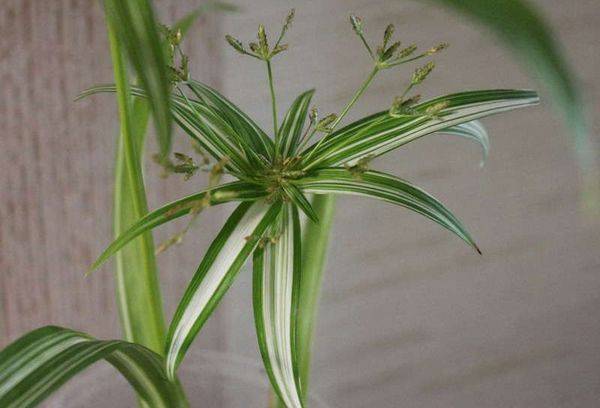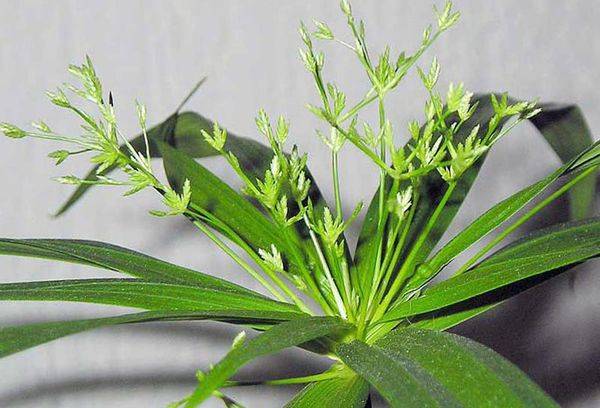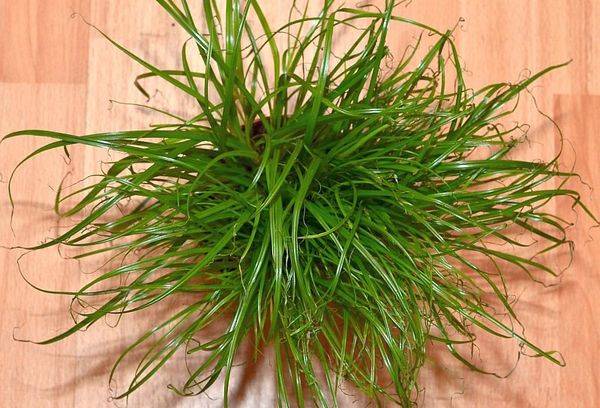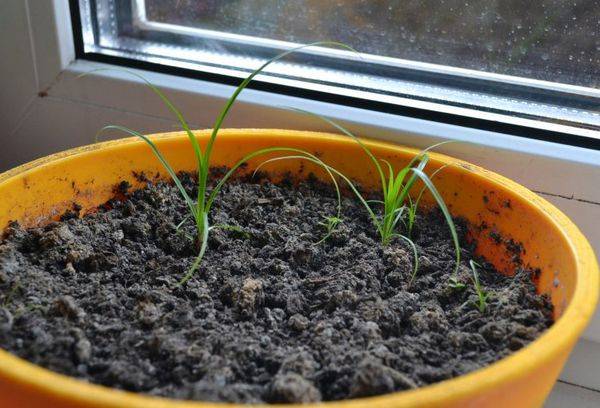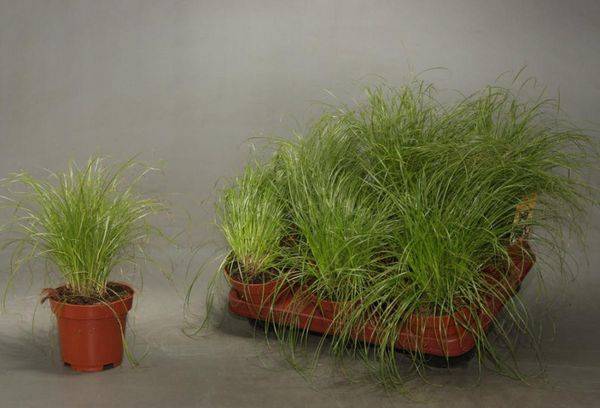Cyperus Live Moisturizer - Home Care
Content:
Grass growing in tropical swamps has long settled on the windowsills of offices, public spaces and apartments. This plant has many advantages: unpretentiousness and beautiful appearance, health benefits and resistance to environmental conditions, as well as absolute compatibility with other plants. What kind of home care does cyperus need? Let's get it right.
Description
The Cyperus culture is a grassy evergreen perennial belonging to the sedge family. The genus of cyperus is numerous, totals about 600 species, common in marshy tropical areas. The grass has many names: syt, papyrus, rush grass, venus grass, sedge and others. Externally, the plant looks like a tall green umbrella, in nature its height sometimes reaches several meters. Habitat - African tropics and the coastal part of the island of Madagascar.
Tip
The online magazine purityis.decorexpro.com/en/ has gathered complete information about cyperus and boldly declares: this unpretentious and hardy plant is able to survive where other indoor flowers die immediately: from busy owners and in the darkest corners.
Home cyperus has erect, numerous trihedral stems, at the end of which umbellate whorls, consisting of linear leaves, are located. The shade of foliage for each species has its own, from light green to saturated emerald. Some species have bicolor leaf plates.
Types and Features
The tropical grass Cyperus is not only original and beautiful, but also very useful: it purifies, moisturizes and enriches the air with oxygen. The plant prefers a humid microclimate and moderate diffused light. The culture is widely used to decorate home ponds, mini waterfalls and fountains. In indoor conditions, the flower develops well and grows rapidly.
Tip
Cypress marsh grass is able to give any green composition an unusual tropical flavor.
Among the numerous representatives of cyperus, only some species are adapted to home growing:
- Papyrus. This ancient species hails from Ethiopia and Egypt. It was he who gave the name to writing material, expensive at that time and incredibly similar to paper. Mats were also made from papyrus, hats and baskets were woven. In nature, in the swamps, this grass reaches 3-4 meters in height. The cultivar is usually grown in greenhouses and conservatories.
- Tsiperus is an umbrella. This plant came to houses and apartments from the island of Madagascar, where in the wetlands it is very common and stretches above human growth. An upright stem with a bunch of narrow leaves hanging down is characteristic of the umbrella variety.
- Tsiperus sprawling. This compact form reaches a height of about half a meter, has basal and apical foliage of different lengths and shapes. In the lower part, the leaves are shorter and wider, at the top - thin and long, collected in small bunches.
- Zumula. This species is a direct relative of papyrus. It has a palm-shaped shape, flexible stems and hanging leaves of a juicy green color. The nodes on the stalks of the zoomula are brought together, so the plant looks like a lush bush. The flower can be pruned and shaped according to the desire and taste of the owner.
Tip
The main species differences of cyperus are in the structure and height of the plant, its color and foliage length. At the same time, the rules for caring for different varieties are the same.
Growing conditions
Dense thickets of tall dark green umbrellas in a pot will not be difficult to grow, provided that they are properly positioned and proper care is taken for cyperus. It is such a rich green shade of this plant, from the point of view of psychologists, that promotes working capacity and improves mood.
Indoor cyperus is an unpretentious and life-sustaining plant, as already noted. The main requirement is abundant watering and regular irrigation. In a dry microclimate, the flower dries and fades.
Lighting and temperature. Tsiperus prefers diffused light, although direct sunlight is not afraid of him. A flower pot is best placed on the south or west side. In summer, the optimal air temperature for it is from 15 to 20 ° C. In winter, the plant calmly tolerates coolness of at least + 10 °.
Air and watering. This tropical representative loves high humidity and plenty of fresh air, so it is recommended to water and irrigate it often, and ventilate the room where it grows.
Fertilizer. Cyperus respond well to top dressing, which is allowed to be carried out all year round. In spring and summer, a complex fertilizer for indoor plants is recommended according to the scheme 3-4 times a week. In autumn and winter, the frequency of top dressing is reduced - enough once a week.
Transfer. Due to the fast growth rate, the herbaceous plant is often transplanted. The soil for cyperus is chosen nutritious and with a slightly acidic environment. Ideally, the substrate for planting will be with the addition of peat, river sand, clay and swamp silt. Drainage should cover the bottom of the pot 1/4 of its volume.
Formation. Systematic sanitary pruning allows the flower to always look well-groomed and beautiful. New shoots quickly appear on the site of cut shoots, this contributes to the renewal and rejuvenation of the herbaceous plant.
How to propagate
For cyperus, there are several ways of planting - seeds, cuttings, dividing the rhizome and rosettes. The longest and most laborious method is the seed method. Propagation by cuttings or rosettes will allow you to quickly grow a beautiful flower for your home or summer house.
Seeds are sown in moist soil in small tanks, creating a moist and warm microclimate for them. Airing and watering is carried out as necessary. Sprouted seedlings dive 3-5 pieces in small pots, abundantly watered and fed with complex fertilizers. Young plants are planted in containers of larger diameter and volume for further independent life.
Cuttings are cut from the stem with sleeping buds at the top. The shoot is cut at a level of 5-8 cm from the outlet and planted in wet sand with the kidney down, sprinkling it a little on top. After some time, the stalk will give young shoots and will be ready to root in a new pot.
The outlet for reproduction is taken by the apical, without separating it from the mother plant, immersed in water and wait for the roots to appear. Next, cut the rosette with the roots, transplant it separately into the prepared soil.
For rhizome dissection, cyperuses are used, whose age is 2-3 years. The detachable part of the root should contain from 3 to 5 shoots. The roots are planted in a new container with an earthen lump.
Tip
In the case of sedge, there is no need to talk about excess moisture. Ciperus will be happy to develop almost in the water. Therefore, expanded clay is poured into the pallet, which is always kept wet.
In nature, the stems of the papyrus bend down to moist soil, where they take root and turn into independent plants.
Possible growing difficulties
Dry air and the proximity of heaters often negatively affect the appearance of the flower. With insufficient moisture and elevated temperature, the plant becomes thinner, its leaves darken and fade. Indoor cyperus is resistant to various diseases and pests, only occasionally, in an extremely weakened state, lends itself to a spider mite or scab.The main disease control measure is a good shower at room temperature and drying in the open air.
Tip
Soil in a pot with cyperus should never dry out. Watering and spraying should be carried out daily.
People say that with cyperus peace, success and prosperity come to the house. The thick green islet in the pot looks spectacular and unusual, it is decorated with large aquariums and given to pets. Thickets of cyperus filter and moisturize indoor air, therefore they are useful for children and adults, as well as other plants.
